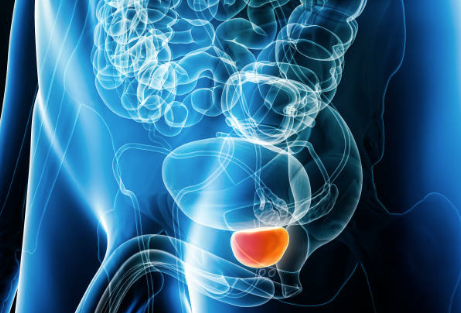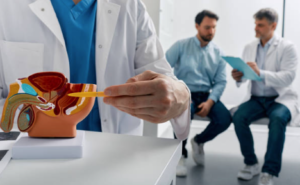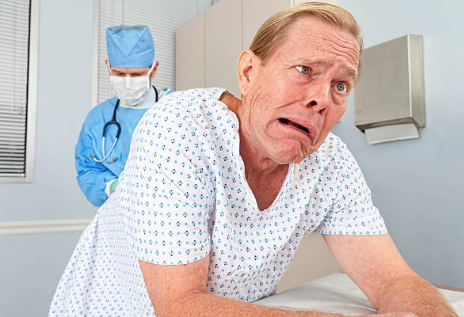Benign Prostatic Hyperplasia (BPH). Why Does My Prostate Get Bigger Anyway?

Benign Prostatic Hyperplasia (BPH). Urgent Guide to Prostate Problems for Men Over 40
Are you a man over 40 starting to notice changes when you pee? Frequent bathroom runs, trouble starting your flow, or feeling like you’ve never quite emptied your bladder? It’s time to delve into the world of prostates, specifically the condition called benign prostatic hyperplasia.
What Exactly is Benign Prostatic Hyperplasia (BPH)?
Think of your prostate as a walnut-sized gland that’s part of your reproductive system. It sits below your bladder, wrapped around your urethra (the tube carrying urine out of your body). Benign prostatic hyperplasia, or BPH, is simply when your prostate grows larger. It’s incredibly common – so common, in fact, that most men experience it to some degree as they age.
Hold On… Why Does My Prostate Get Bigger Anyway?
We don’t have all the answers, but the main cause of prostate enlargement centers around hormonal changes as you get older. Testosterone, your main male hormone, plays a significant role.
Benign Prostatic Hyperplasia Symptoms: Is This Why I Keep Running to the Bathroom?
BPH Doesn’t Hit Everyone the Same Way: Watch Out for These Red Flags
Benign prostatic hyperplasia doesn’t have a one-size-fits-all effect. However, keep an eye out for these telltale signs of potential prostate trouble:
-
Urgent Need to Go: Suddenly, you can’t hold it like you used to. The urge to urinate feels immediate and overwhelming, challenging to ignore.
-
Bathroom Marathon: You’re peeing a lot, all the time, especially annoying at night. Increased urinary frequency significantly impacts your day-to-day life and sleep quality.
-
Weak Stream: It’s more like a pathetic dribble than a satisfying flow. A decrease in urine flow strength or intermittent flow is frustrating and noticeable.
-
Hesitation: It takes forever just to get started. Trouble initiating urination, even with a feeling of urgency, is a common BPH symptom.
-
The Never-Ending Trip: You finish, but it still feels like you gotta go. That lingering feeling of an incompletely emptied bladder is a hallmark of prostate enlargement.
Important Note: While these symptoms are strongly associated with BPH, it’s crucial to consult a doctor for a proper diagnosis. Other health conditions might cause similar symptoms, so discuss your concerns with a medical professional to get the right answers and treatment options.
Wait, Are You Saying I Have a Prostate Problem?
Those symptoms could certainly point to BPH, but it’s important to remember that other things might cause similar issues. That’s why talking to your doctor is key. They’ll use the medical term benign prostatic hyperplasia ICD-10 to categorize what’s going on.
Does an Enlarged Prostate Affect A Man Sexually?
Unfortunately, the answer is yes, it can. BPH symptoms themselves can make intimacy a challenge, and some of the treatments may also have unwanted side effects. The good news is there are options to address these issues.
My Prostate is Enlarged. Now What?
The big thing is, BPH is treatable! Your doctor will recommend the best approach based on your specific situation.
Benign Prostatic Hyperplasia Treatments: A Range of Options for Relief
From watchful waiting to surgery, treatment for BPH depends entirely on the severity of your symptoms and how they impact your life. Here’s an overview of common approaches:
-
Watchful Waiting: For mild symptoms, monitoring might be enough. This involves regular checkups with your doctor to see if your condition worsens. It’s often the first step for many men with minimal discomfort.
-
Medications: Several options can relax muscles and shrink your prostate. These include:
- Alpha-blockers: Help relax bladder and prostate muscles for easier urination.
- 5-alpha reductase inhibitors: Block hormone production that causes continued prostate growth.
- Natural Prostate supplements.
-
Minimally Invasive Procedures: These outpatient treatments reduce prostate size using different techniques. Examples include:
- Prostatic urethral lift (PUL): Tiny implants to hold the enlarged prostate away from the urethra.
- Water-induced thermotherapy (WIT): Uses heated water to destroy prostate tissue.
- Rezum: Water vapor to reduce prostate size.
-
Surgery: If other options fail, several surgical procedures can offer relief. The most common is TURP (transurethral resection of the prostate), where a portion of the prostate is removed. Newer, laser-based options may also be available.
Choosing the Best Enlarged Prostate Treatment for YOU
Your doctor will help you navigate these options, considering factors like:
- Severity of your benign prostatic hyperplasia symptoms
- Size of your prostate
- Your overall health and age
- Any other medical conditions you have
It’s important to find a treatment approach that balances effective symptom relief with potential side effects. Don’t hesitate to ask questions and be actively involved in the decision-making process.
Worried? Don’t Be. Seek Out BPH Solutions
Having BPH is like having wrinkles; it’s often a normal part of aging. The fear is usually worse than the reality. And remember, you’re not in this alone.
What Else Can I Do for Optimal Prostate Health?
Besides medical treatment, certain lifestyle changes might ease symptoms or slow prostate growth:
- Pelvic Floor Exercises: Like Kegels, they strengthen muscles that support your bladder.
- Diet Matters: Focus on fruits, veggies, and limit processed stuff and red meat.
- Manage Fluids: Timing your intake can be helpful (for example, limiting fluids before bed).
The Size of Your Prostate… Does it Really Matter?
Oddly enough, the enlarged prostate size doesn’t always equal the severity of your symptoms. Some men with significantly enlarged prostates have minor issues, while others struggle more.
Benign Prostatic Hyperplasia vs. Hypertrophy: Is There a Difference?
These sound interchangeable, but there’s a subtle distinction. Both refer to an enlarged prostate, but:
- Hyperplasia: An increase in the number of prostate cells.
- Hypertrophy: An increase in the size of those cells.
Most cases of BPH involve a combo of both.
Time to Take Action and Empower Yourself!
Don’t live in quiet misery or let the fear of the unknown control you. Talking to your doctor is the first step towards getting answers and finding the solution that’s right for you.

FAQs: Understanding Benign Prostatic Hyperplasia (BPH)
FAQ-1. I’m over 40 and having some bathroom issues. Does this mean I have BPH?
Not necessarily. While those symptoms can indicate BPH, other conditions might cause similar problems. It’s essential to see your doctor for proper diagnosis and to rule out other possibilities.
FAQ-2. Can an enlarged prostate affect my sex life?
Yes, unfortunately. BPH can cause difficulties with erections and ejaculation. Some treatments might also have side effects that impact sexual function. The good news is there are options to address this, so discuss it openly with your doctor.
FAQ-3. My doctor mentioned “watchful waiting.” What does that involve?
For mild BPH symptoms, watchful waiting means regularly monitoring your condition with your doctor, without immediate treatment. They’ll track any changes and may suggest medication or procedures if your symptoms worsen.
FAQ-4. What are minimally invasive procedures for BPH?
These are outpatient treatments that reduce the size of your prostate without traditional surgery. There are different techniques like PUL (prostatic urethral lift), WIT (water-induced thermotherapy), and Rezum which uses water vapor. Your doctor can explain which might be right for you.
FAQ-5. Will diet changes help my prostate?
While diet alone won’t cure BPH, healthy eating habits might play a role in managing symptoms and supporting overall prostate health. Focus on fruits, vegetables, whole grains, and limit processed foods, sugary drinks, and red meat.
SEE ALSO: Latest Prostate Supplements >>

